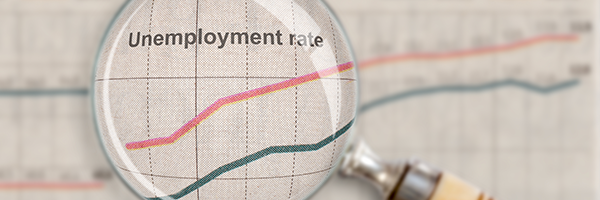
May 11, 2021 | Daily JAM, Morning Briefing |
Stocks are down across the markets today–with the Standard & Poor’s 500 lower by 0.87% at the close, the Dow down 1.36%, and the NASDAQ Composite off 0.09%–ahead of tomorrow’s report on the Consumer Price Index read on inflation. But the real action today is in the CBOE S&P 500 Volatility Index (VIX) as investors and traders look to buy protection against potential volatility in case inflation, expected to head higher tomorrow for April, really spikes higher.

May 10, 2021 | Daily JAM, Morning Briefing |
Today’s drop in stocks–a drop of 1.04% for the Standard & Poor’s 500 and a loss of 2.55% for the NASDAQ Composite at the close on May 10–is a reminder that runaway economic growth is only one horn of the financial market’s fears about the Federal Reserve and higher interest rates.

May 9, 2021 | Daily JAM |
This week Wall Street analysts and economists, professional money managers, and individual investors and traders will “re-calculate” their expectations about the economy for the remainder of 2021. Friday’s surprisingly small addition of 266,000 jobs to the U.S. economy–instead of the 1 million projected by economists–will lead to a revisions in assumptions about inflation, interest rates, and economic growth for the rest of 2021.

May 2, 2021 | Daily JAM, Morning Briefing, Short Term |
The U.S. economy is likely to have added 978,000 jobs in April, the Bureau of Economic Analysis will report on Friday May 5, according to economists surveyed by Bloomberg. That would be up from March’s gain of 916,000 jobs and would be the biggest increase since August 2020. It would probably send the unemployment rate down to 5.7% in April from 6% in March. The report will also put added pressure on the Federal Reserve to begin to reduce its program of buying $120 billion a month in Treasuries and mortgage-backed securities to support the economy. An initial reduction in the size of that program would be seen by the financial markets as a sign that the central bank is beginning to think about raising interest rates.

April 15, 2021 | Daily JAM, Morning Briefing |
Initial claims for unemployment in regular state-run unemployment programs fell to 576,000 last week. Economists had projected 710,000 new claims for the week.

April 13, 2021 | Daily JAM, Morning Briefing |
The Consumer Price Index (CPI) rose 0.6% in March from February, the Labor Department reported this morning. Year over year consumer prices are 2.6% higher than they were in March 2020. Economists had projected that the headline CPI would climb 0.5% in March from February and 2.5% year over year. Financial markets shrugged off the numbers.

April 12, 2021 | Daily JAM, Morning Briefing |
This isn’t good news for the prospects for a sustained economic recovery in the United States from the pandemic recession of 2020. The 25 biggest U.S. banks reduced their total loan portfolios by 8% in 2021 through March from the same point in 2020, according to the Federal Reserve’s latest weekly survey.
April 8, 2021 | Daily JAM, Morning Briefing |
We want to see the job gains before we remove any support for the economy, Federal Reserve Chairman Jerome Powell said at an event at the International Monetary Fund, on Thursday, April 8. Putting another marker in the ground on when the central bank might start to cut back on its schedule to purchase $120 billion a month in Treasuries and mortgage-backed securities–and then to raise its benchmark interest rate, Powell said the Fed wants to see a string of months like March when the economy added 916,000 jobs.

April 8, 2021 | Daily JAM, Morning Briefing |
Initial claims for unemployment in regular state programs rose by 16,000 to 744,000 in the week ended April 3, the Labor Department reported today, April 8. This was the second straight weekly increase in new claims. For the prior week, the total new claims figure was revised upward to 728,000. Economists surveyed by Bloomberg had projected that initial claims for the week would fall to 680,000.

April 7, 2021 | Daily JAM, Mid Term, Morning Briefing |
Nothing to see here. Move along. In the minutes from its March 16-17 meeting, released today April 7, Federal Reserve officials told the financial markets “that it would likely be some time until substantial further progress toward the [Open Market] Committee’s maximum-employment and price-stability goals would be realized.” And, the minutes went on, “a number of participants highlighted the importance of the Committee clearly communicating its assessment of progress toward its longer-run goals well in advance of the time when it could be judged substantial enough to warrant a change in the pace of asset purchases.”

March 26, 2021 | Daily JAM, Morning Briefing |
The Federal Reserve’s preferred inflation measure, the Personal Consumption Expenditures (PCE) Price Index fell 0.2% month to month in February from January. That was below economist expectations of a 0.5% month to month gain. On a year over year basis, the headline PCE Price Index climbed 1.6%, according to the U.S. Bureau of Economic Analysis. That was in line with economists’s projections.
March 23, 2021 | Daily JAM, Short Term |
This weeks long list of Treasury auctions started off today with a very good sale of $60 billion in two-year notes today. Today’s sale came with a yield of 0.152%–yep that’s where interest rates are right now–on the two year note. That matched the bid in the when-traded market. Total bids amounted to 2.54 times the amount of debt offered. It’s a good sign when bids exceed the amount on sale. In February the bid-to-cover ration was 2.44 times. The yield on the benchmark 10-year Treasury fell 7 basis points today to 1.62%.









